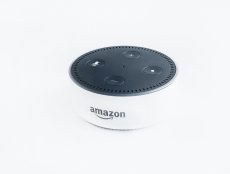
Articles
K-12
How Two Districts, Facing Different Obstacles, Brought Learning Online During Covid-19
By Renee Patton
July 21, 2021
It’s a tale of two schools districts.
One couldn’t be more different than the other. But – they share a common goal: reimagine what learning can be, when every student starts on the same footing.
Our Two Districts
“In the classroom, education tends to resist change as much as possible,” says Dr. Oscar Rico, technology director at the Canutillo Independent School District. “Our systems hadn’t really changed in nearly 100 years, until 2020 when COVID-19 forced us to change. It wasn’t by choice.”
The Canutillo Independent School district serves a desert community, a suburb of El Paso, Texas. The border to Mexico is just miles to the south. New Mexico is a stone’s throw to the west. While this school district is rapidly growing, only 10 campuses currently serve a little more than 6,000 students. Many are from low-income communities where internet access is limited.
Contrast this to St. Vrain Valley School District, the seventh largest in Colorado. It serves more than 32,000 students across 60 schools and programs. However, their geography left them with their own connectivity issues.
“On one side of the district, you have the foothills of the Rocky Mountains with low canyons that have no cellular service,” explains Michelle Bourgeois, chief technology officer for St. Vrain Valley School District. “On the other side, you have vast plains where the population density is so low that there’s no incentive for digital infrastructure investments.”
Recognizing the Digital Divide
As COVID-19 spread across the country, school districts from the Pacific to the Atlantic had no choice but to send their students home. For some, this was an easier transition than others. With basic digital infrastructure in place, virtual learning was less of a challenge. But for the Canutillo Independent School District and St. Vrain Valley Schools – it was time to get creative.
“When the pandemic started, our internet service provider supplied free service to students, so they’d be able to connect,” Dr. Rico recalls. “We were thankful for that program, but it doesn’t do a whole lot of good when 70% of our students didn’t have the adequate infrastructure to access the internet.”
Despite already prioritizing basic digital infrastructure, and equipping students with devices and resources, Bourgeois remembers a similar scenario.
“We’d already invested heavily in system infrastructure, teacher professional development, and other key sustainability pillars that prepared us well for the shift in education brought on by the pandemic,” she says. “The challenge was ensuring that every student had access to robust internet connectivity. We closed for spring break and had just 10 days to figure out how we were going to come back to learning, engage our students in a positive way, and have a center of connectivity for all students.”
Thinking Beyond the “Pivot”
Both districts used what they had to solve the challenge. At St. Vrain, they used that 10-day window to set up 10 outdoor access points, in 10 regional areas across the district. When spring break ended, there was at least one outdoor access point in each region of the district.
“I would pull into a parking lot, and wave to families as they were next to me in lawn chairs or in their cars,” Bourgeois says. “That’s how we first transitioned to digital learning.”
For the Canutillo Independent School District, the transition was a bit more complicated.
“The first thing we knew we needed to get through the pandemic was computers. We were repurposing computers that were 10- to 15-years old,” Dr. Rico says. “We sent these old computers, that weren’t very productive, home with our students and told them to carry on with remote learning. It wasn’t a recipe for success, and I knew we needed to do more.”
The bare minimum of setting up community access points wasn’t enough for St. Vrain, either.
“’Pivot’ is almost an overused word right now to describe how industries made changes to their operations during the pandemic,” Bourgeois says. “We wanted to do more than pivot, putting a band aid on things, waiting for the storm to pass. We saw it as an opportunity to reimagine what learning could be.”
Bridging the Divide
“We needed a partner to help us connect these kids. But they dropped off one by one,” Rico remembers. “They thought I was from a small school district, with a small footprint, wanting to do things that the most advanced school districts in the country were doing. That wasn’t true. I just wanted to connect my students. I needed a partner who was as crazy as I was, and would embrace this, apparently, radical way of thinking.”
Once Dr. Rico found his technology partner, he worked with them to install mesh networks and outdoor access points, and distribute working machines with collaboration tools that gave students one-to-one face time with teachers.
St. Vrain Valley Schools worked with the same partner, using the same collaboration tools for virtual learning. Now, they’re taking their community access points to the next level, working with the technology partner and their city, through a grant from the federal government and the state of Colorado to build a wireless mesh network that will cover the entire district.
The Future of Learning
Both Dr. Rico and Bourgeois have similar views on what the future holds for education. They recognize that while students will be back in the classroom, learning will extend well beyond the four walls of the school.
“Now, with improved connectivity, we can visit any place in the world from the classroom,” Dr. Rico says. “We can take virtual trips to places in the world that my students didn’t even know existed.”
“At one of our schools, we have a session of European history that gives students a college credit,” Bourgeois says. “Now, every student in the district has the opportunity to take that course and earn that credit. We’re helping families make sure that students have every chance and can take advantage of every opportunity to be ready for college.”
Dr. Rico agrees.
“With these solutions – we can provide our students with an equal starting line to some of the wealthiest school districts in the country.”
Renee Patton is the global director of education and healthcare at Cisco.
Featured Image: Chuttersnap, Unsplash.









[…] Read the full story by eLearningInside News […]